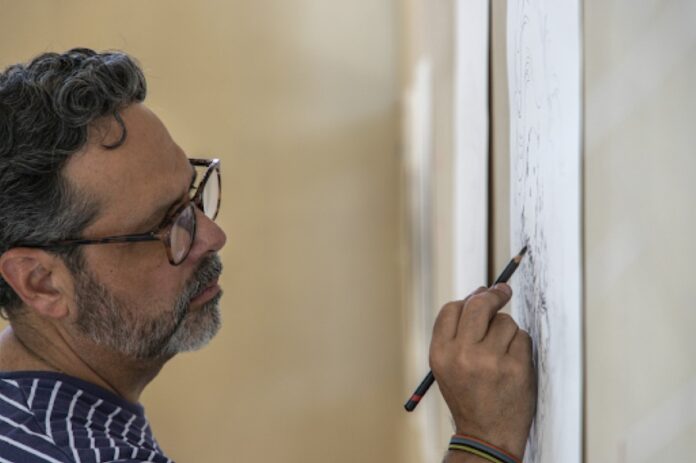A new residency for international artists has opened on a scenic property in Atotonilco, just outside San Miguel de Allende.
“Throughout the centuries, Atotonilco’s extraordinary energy has made it possible for hot waters to flow and spiritual fervor to buzz,” says Camino Al Arte’s founder Monica Contreras, referring to Atotonilco’s well-known natural hot springs. “In 2020, I decided this would be a site where artists, writers and creative minds could gather to produce works of ingenuity and beauty.”
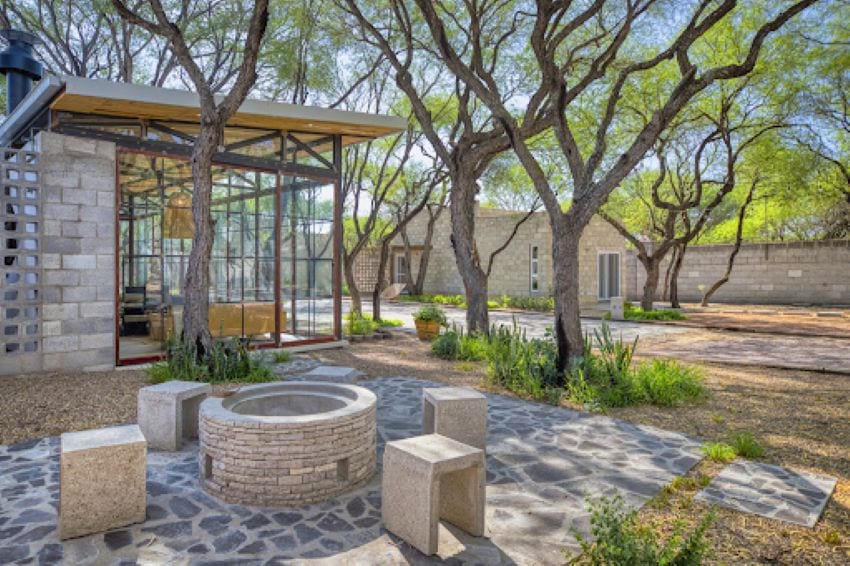
In October 2023, Contreras’ vision of a dedicated space for imagination and invention became a reality when the Mexican and U.S. nonprofit residency welcomed its first artist. Since then, the architecturally modern grounds surrounded by mesquite trees have fostered the work of 23 creatives from Canada, the U.S., Mexico and South America.
One of these artists is Antonio Castro, a professor of art at the University of Texas-El Paso.
“I believe that Camino al Arte’s mission is about creating opportunities for both emerging and established artists from around the world to connect with the artistic community in San Miguel de Allende and the surrounding areas,” Castro says. “But more than that, it’s also a space that encourages meaningful conversations — especially about the issues affecting society — and, in turn, influences how we create.”
With a unique philosophy that welcomes women artists with their children, senior artists over 70 and emerging artists fresh out of school, Camino al Arte aims to be an inspirational presence in the community.
Visiting artists hold onsite educational events on topics of local importance. Contreras works closely with the surrounding schools, teachers and families.
“Thanks to the artists, we are able to sponsor a community arts education program called Somos El Arte,” she said. “We [give] about 20 workshops, classes and demonstrations per year to primarily youth, women and teachers.”
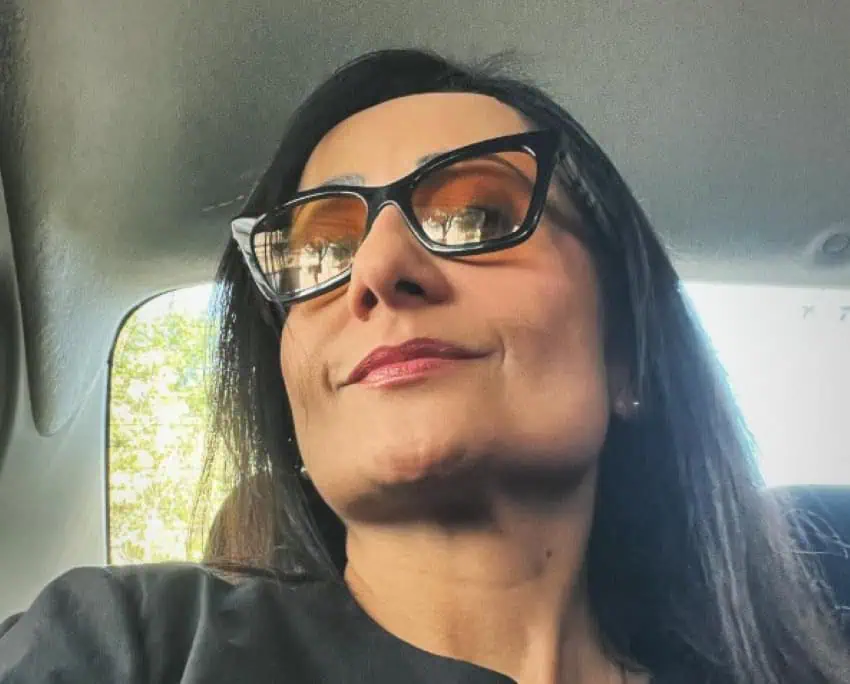
Internationally recognized artists
It seems Contreras is achieving her original dream, which she says is “to improve people’s lives through their immersion in and exposure to the arts.”
“We are just getting started,” she says, “but in five years, Camino al Arte will offer an even more robust residency program, scholarships and stipends for emerging artists, and expanded infrastructure for programs for our community’s art education activities.”
Though Contreras has a special place in her heart for both emerging and senior artists, Camino al Arte has also been an escape for those with well-established careers, such as Professor Castro.
This April, the artist-in-residence was Danielle Trussoni, a New York Times, USA Today and Sunday Times Top 10 bestselling novelist. Her most recent novel, The Puzzle Box, recently won the Los Angeles Times Book Prize in the Mystery/Thriller category.
Danielle says she came to Camino al Arte seeking peace and quiet.
“I had a book come out last October and spent that entire month touring. During that winter, I wrote the proposal for a new book that just sold. It was an intense four months. And now I need a finished manuscript by July. I have a tight deadline.”
Danielle, who has a seven-year-old daughter, laughed.
“There is a lot of noise in my house. This is the first time that I have been able to calm down. I meditate in the morning. I’ve been able to get into the natural rhythm of my work. I take walks, and, if I want to, I write in the middle of the night.”
Castro found his time at Camino al Arte to be a life-changing experience. Already a successful graphic designer with many significant awards, he came to the residency to do something distinct and personal — to commemorate the memory of his mother.
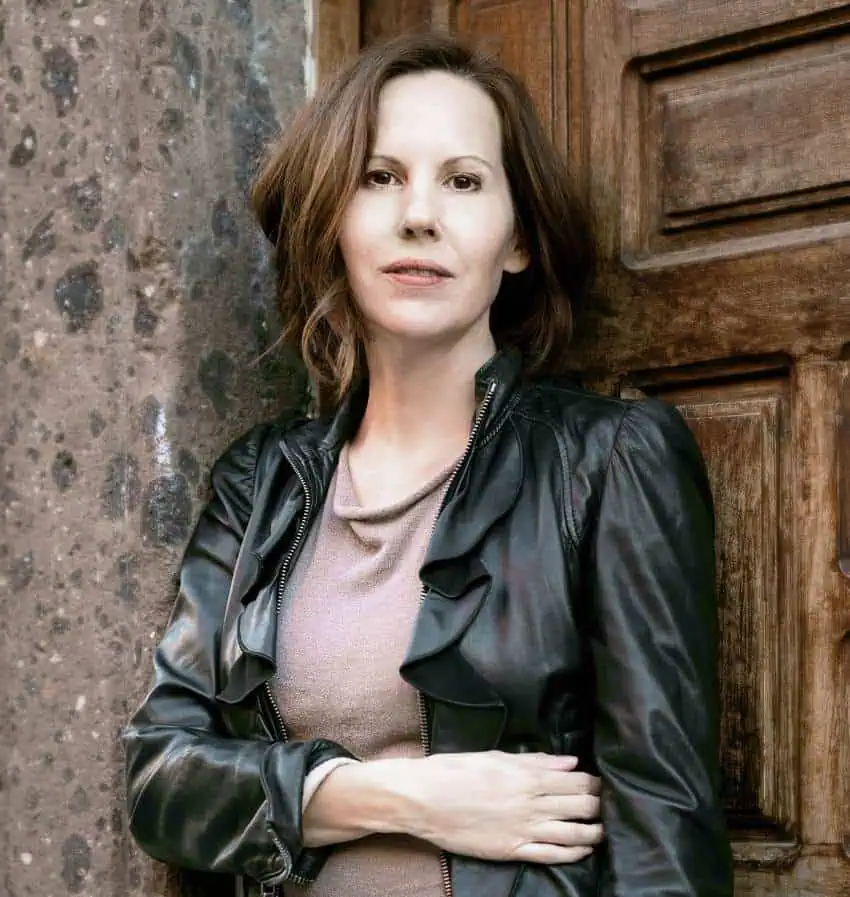
“My mother had passed away the previous year after battling Lewy Body Dementia, a vicious and degenerative disease,” he says. “Watching her forget her children and her husband was devastating, not just for her, but for our entire family.
“As heartbreaking as it was, I found the strength to document her final years through photography, intending to use those images as the foundation for a new body of work. Over three intense weeks of creation at Camino al Arte, I found myself not only confronting her illness but also reflecting deeply on what it meant to be her son. The process brought back memories of joy, love and resilience. It reminded me that her legacy was not defined by her disease but by the life she lived and the joy we experienced together.”
“Being in such a secluded place gave me the space and focus to process everything I’d been through,” Castro added. “In a way, it became a personal kind of mourning, but through the eyes of an artist.”
A positive community impact
One of Contreras’ hopes for the future is to focus even more on beneficial interactions with families in the Atotonilco community.
“Last summer,” she said, “Uruguayan resident artist Serrana del Castillo decided to expand her cultural exchange experience by spending time at the home of Carmen Muñoz, a community leader. Serrana’s goal was to learn how to cook like the locals do, and Carmen taught her the basics: from gathering vegetables and grinding corn to cooking mole and making fresh tortillas. I love this memory because it really exemplifies the magic that happens at Camino Al Arte: Local and visiting talent meet, joining hands to produce something extraordinary.”
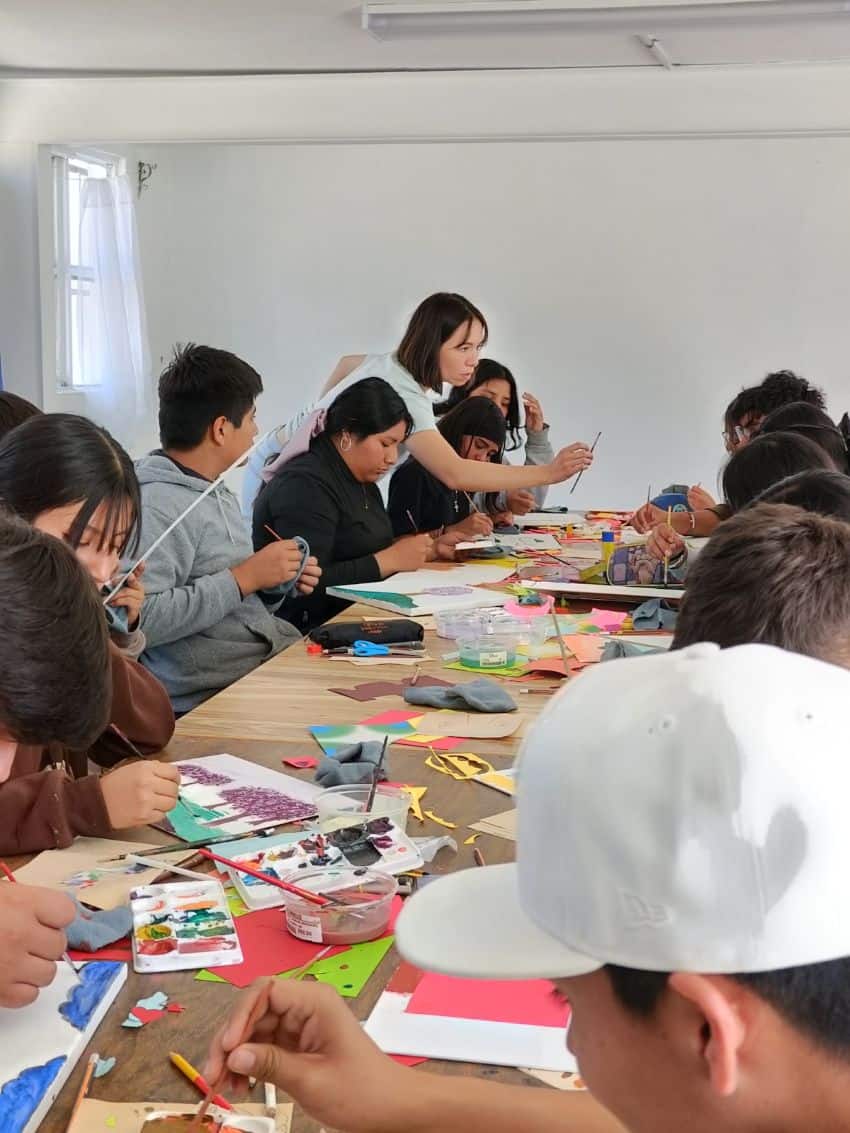
Contreras has recently launched a new program called the Community Impact Residency. Made possible by the organization Fomento Educacional A.C., this scholarship offers a unique opportunity for emerging artists and graduate students from the United States to interact with Mexican communities through art.
Residents are selected to create impactful projects that address important social issues, such as forced migration, water scarcity, teen pregnancy and gentrification.
“Camino Al Arte has a special focus on mitigating the effects of living without access to arts and culture in some of our most vulnerable communities,” Contreras says. “Our goal is to stimulate people, especially our youth, to develop skills that help raise their optimism, creativity and productivity levels and overall quality of life.”
The social impact of the nonprofit is made possible thanks to donations and contributions from patrons and artists alike.
Fostering multicultural understanding
This sanctuary, where artists from around the globe come to live, create and volunteer together, is a rare opportunity to learn about other cultures.
“I was born in Ciudad Juárez, Chihuahua,” says Castro. “And like many border dwellers, I split my young years between Juárez [Mexico] and El Paso, Texas. Spanish was my first language, and the duality of life on the border became a defining part of who I am.”
Living at the intersection of two nations is a unique experience, says Castro
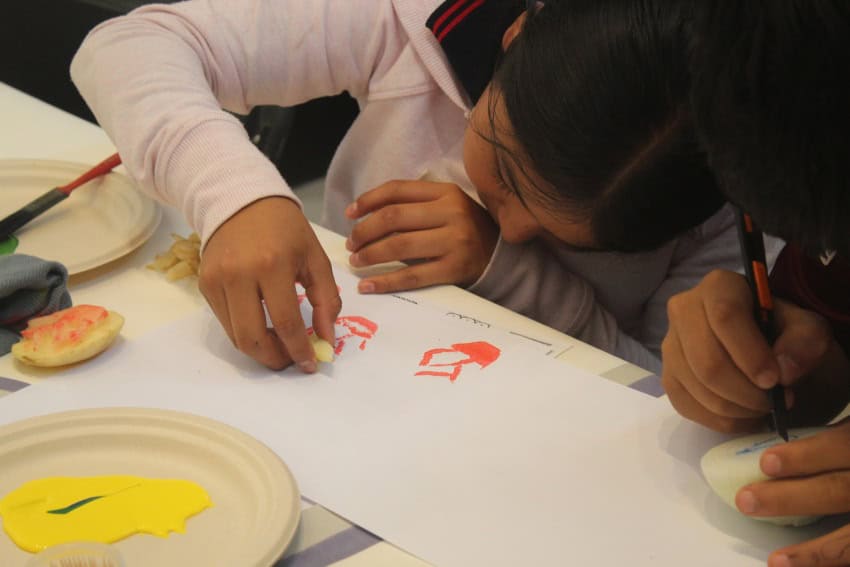
“Yet, rather than being a source of confusion or conflict, this duality enriches us. Border people are not splintered by these influences; we are made more whole, more resilient,” he says. “I’ve found that those who grow up along the border are remarkably adaptable, often thriving in situations that might challenge individuals from the interior of either country.”
Camino al Arte is in many ways a revolutionary new addition to the ever-evolving cultural offerings in Mexico. And, as Castro points out, being immersed in other cultures and languages is a source of enrichment and understanding.
“There is a palpable confidence that comes from navigating multiple worlds daily. It becomes a strength, a way of seeing, a way of being — and in my case, a way of creating.”
Camino al Arte offers two-, four-, six- and eight-week residencies, with flexibility for those who wish to stay longer.
To apply, contact Camino al Arte at:
[email protected]
+52 415 167 1255 (Mexico)
+1 646 327 3774 (U.S.)
